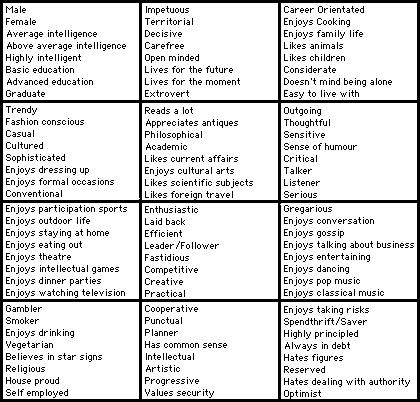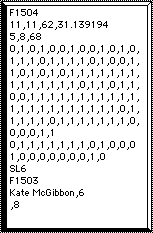

What is a bot or personal electronic agent?
Despite the great promise of bots and personal electronic agents, they have not been used to any great extent on the Internet. Probably this is because the expectations as to what they can achieve has been too high. In general, they deal with information and unless that information is neatly categorised and the requirements are specific they are hopelessly inefficient.
Sure, you can use artificial intelligence techniques, rule based systems, fuzzy logic, neural nets and genetic algorithms, but, nobody has succeeded yet in giving bots or electronic agents any real intelligence: at least, not of the kind that can deal with conflicting data, uncertainty or ambiguity.
In fact, bots and personal agents are only an illusion. They don't wander around the Web searching for targeted information or executing intelligent decisions. Mostly, they are simply a contrived means of inputting a request into a search engine or relational database. Even the animated agents that appear as personal assistants or customer service avatars are simply novel interfaces to database files.
Unfortunately, most of the information on the Internet is disorganised, not categorised and extremely volatile in nature. It is soon outdated and there are far too many changes happening and too much information to keep track of. Even the most sophisticated of search engines or databases are not efficient when it comes to dealing with this kind of volatility.
Because bots and electronic agents are totally reliant upon search engines or database type algorithms, his same limitation must apply to them also – because it isn't possible to incorporate into their design enough intelligence to handle uncertainty, ambiguity and excessive volatility. Only humans can do this.
Vic Harper, one of the readers of my recent book, summed up the problem neatly:
I already know there is....
too much information out there to gather or sort
too little time to read all that you want to
too little energy to absorb all that is useful
too much technology to master
too much useless dribble masking the useful
too much redundant efforts
too much lost stuff
It's this situation that is faced by most people when dealing with the environment of the Internet. They are presented with information overload and it is not in a form they are capable of dealing with efficiently. Databases and bots can provide pockets of order, but, so far they have failed to provide suitable solutions to the main problems of dealing with the chaotic confusion caused by vast quantities of changing information. What is needed is a totally new paradigm – a different way of looking at search engines, databases, bots and personal electronic agents – a way in which these problems might be overcome.
The proposal here is that we forget about using databases for dealing with information and instead use them to create an environment for people to meet each other to exchange information. We also give up on the idea of bots and personal electronic agents having any inherent intelligence and view them simply as message carriers – with humans providing any intelligence that might be needed. In this way, we can create a living database – where all the information is held in the heads of people – where the human brain can be used strategically, to do all the clever sorting stuff.
Using bots as information carriers, they can be used to carry information that describe their owners. This information can be programmed into a bot simply by the bot owner answering a few questions. Figure 1 shows a questionnaire used for a personal agent that visits virtual meeting places to find compatible dating partners.

Figure 1 - An example of personality and attitude questions in the questionnaire. The responses to these questions are then turned into a binary string
The bot owner clicks on the statements in the list that they think would apply to them and these choices are then used to create a binary string that reflects the personality of the owner. This binary string can then be inserted into a personal agent so that anyone else viewing this record would know something about the personality and character of its owner. Such a record is shown in figure 2, where other information can be added, such as name and contact details, etceteras.

Figure 2 - An example of a record that is created from a questionnaire. Besides carrying information coding for physical and tangible characteristics, it carries a series of binaries to indicate how the bot owner has responded to the personality and attitude questions
If a real person encountered this bot anywhere on the Internet, they could (if they knew the questions) be able to make a judgement on its owner. Furthermore, if thousands of these bots were encountered, it would be a relatively easy sorting process to make specific selections from amongst them – according to certain desired characteristics or preferred profile.
If questionnaires are created to cover particular areas of knowledge, bots could be used to quickly put people who want to know in touch with those who know it. The trick is to be able to find where the right sort of bots hang out.